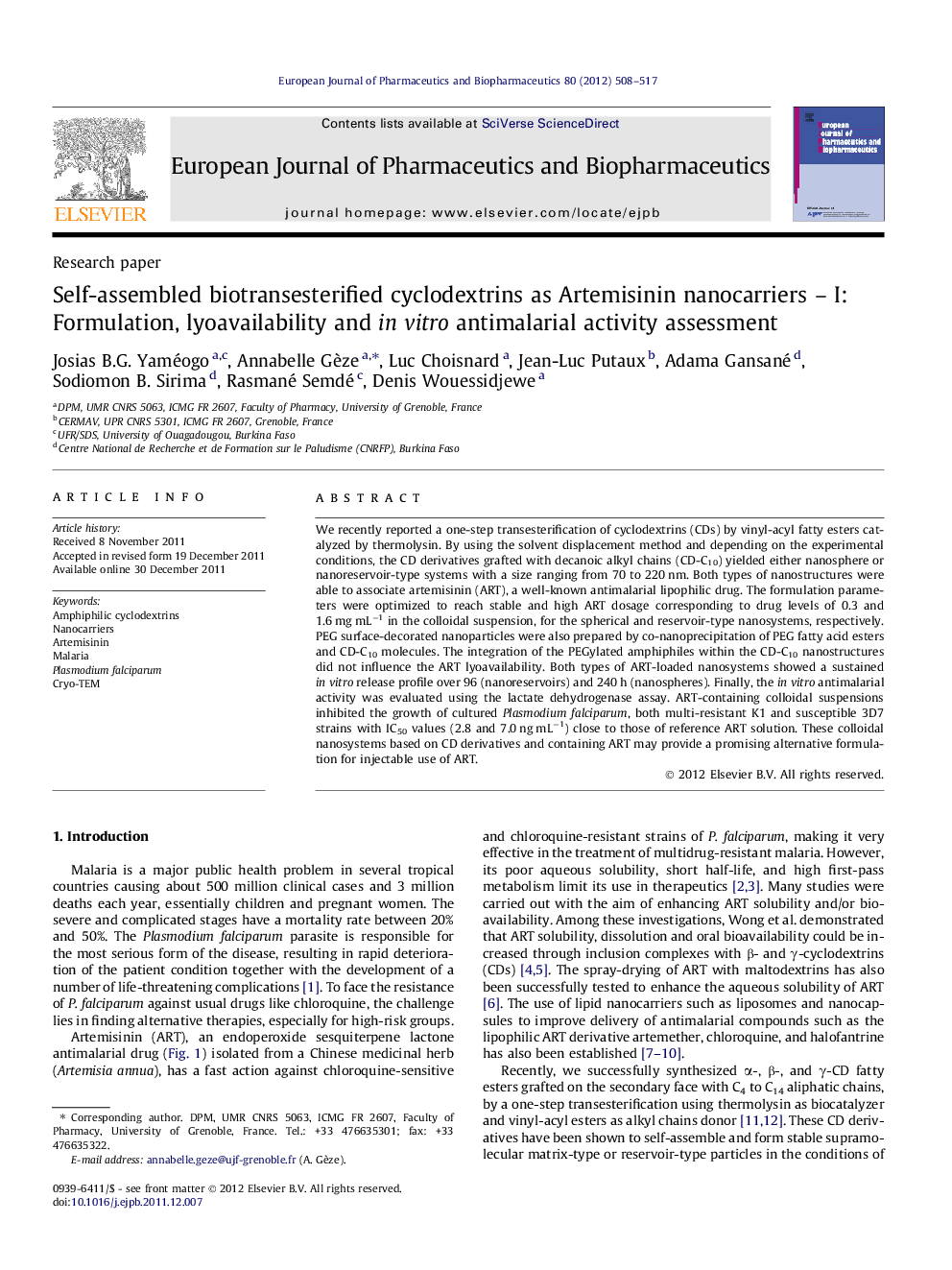| Article ID | Journal | Published Year | Pages | File Type |
|---|---|---|---|---|
| 2083878 | European Journal of Pharmaceutics and Biopharmaceutics | 2012 | 10 Pages |
We recently reported a one-step transesterification of cyclodextrins (CDs) by vinyl-acyl fatty esters catalyzed by thermolysin. By using the solvent displacement method and depending on the experimental conditions, the CD derivatives grafted with decanoic alkyl chains (CD-C10) yielded either nanosphere or nanoreservoir-type systems with a size ranging from 70 to 220 nm. Both types of nanostructures were able to associate artemisinin (ART), a well-known antimalarial lipophilic drug. The formulation parameters were optimized to reach stable and high ART dosage corresponding to drug levels of 0.3 and 1.6 mg mL−1 in the colloidal suspension, for the spherical and reservoir-type nanosystems, respectively. PEG surface-decorated nanoparticles were also prepared by co-nanoprecipitation of PEG fatty acid esters and CD-C10 molecules. The integration of the PEGylated amphiphiles within the CD-C10 nanostructures did not influence the ART lyoavailability. Both types of ART-loaded nanosystems showed a sustained in vitro release profile over 96 (nanoreservoirs) and 240 h (nanospheres). Finally, the in vitro antimalarial activity was evaluated using the lactate dehydrogenase assay. ART-containing colloidal suspensions inhibited the growth of cultured Plasmodium falciparum, both multi-resistant K1 and susceptible 3D7 strains with IC50 values (2.8 and 7.0 ng mL−1) close to those of reference ART solution. These colloidal nanosystems based on CD derivatives and containing ART may provide a promising alternative formulation for injectable use of ART.
Graphical abstractIn vitro release profiles of Artemisinin from nanocarriers.Figure optionsDownload full-size imageDownload high-quality image (61 K)Download as PowerPoint slide
